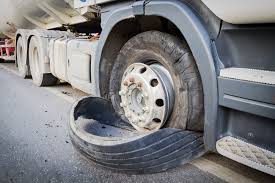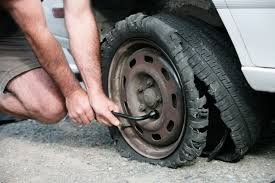Tips For Making Your Transmission Last Longer
Your transmission is one of the key components of your car, truck or SUV. It is the system that transfers energy from the engine and makes it possible for the wheels to turn and your vehicle to operate in the correct gear. Your transmission is also one of the most expensive parts of the vehicle. The average new car transmission can cost between $1,800 and $3,400. Even a rebuilt transmission is likely to set you back more than $1,000. It just makes good economic sense to do all you can to make your transmission last as long as possible. Fortunately, there are a number of things you can do to maximize the lifespan of your transmission.
What you can do to make your transmission last?
- Check your transmission fluid regularly. This may seem obvious, but how many of us really do this. (When was the last time you checked your fluid levels?) If you have your oil changed regularly, the technician will often check your transmission fluid but, If you change your own oil, you may not have checked your transmission fluid for even longer. Experts recommend that you check your transmission fluid level in the reservoir every two to four weeks.
- Have your transmission serviced according to your manual’s guidelines. Like your oil, your transmission fluid and fluid filter need to be totally changed periodically. For new cars, this is usually every two years of 40,000 to 50,000 miles. For older cars, you should have this done every 18 months or 20,000 to 30,000 miles.
- Modify your driving style. “Jack rabbit” starts and fast stops can take their toll on your transmission. So can constantly accelerating and decelerating. Better to adopt an even speed or use your cruise control on the highway to avoid wear and tear on your transmission.
- Consider investing in a transmission cooler. Heat is the number one threat to your transmission’s health. It damages the seals, the metal surfaces and the electronic components. A good transmission cooler can dramatically lower the temperature in the gear box and help your transmission to last two to three times longer.

Know Your Vehicle and Transmission
Reading your owner’s manual is the first step you should take. You should know the ins and outs of your vehicle, including how it should be maintained and serviced. This could impact how often you change fluids and whether flushes may be recommended.
Change Fluids at Regular Intervals
Your manual will tell you how often to change oil and transmission fluids. New vehicles may not need changes for a long time, but used cars with lots of miles on them may need them more frequently.
Stop Riding Your Brakes
Riding your brakes is a bad habit in general, but it can be especially bad for the health of your transmission. Learn to pay attention to have often you do apply your brakes and make a mental note to begin retraining yourself to only do so when it’s really needed.
Shift After a Full Stop
When you are shifting from drive to reverse -and vice versa – make sure that you come to a full stop before doing so. Continually failing to do so can weaken your transmission over time, reducing its useful life and putting it in greater danger of failure.
Think Before You Tow
Unless you have a heavier duty vehicle that was designed to be up to the task think very carefully before you hitch anything up to the tow bar. The added weight of another car, a camper or even a heavily laden moving trailer can cause all kinds of problems for your transmission.
Don’t Ignore the Signs of Transmission Trouble
Strange smells, grinding gears, odd sounds and little drops of red (and occasionally green) fluid on the garage floor can all mean that your transmission is in a bit of trouble. If you notice any of these things don’t delay a trip to your mechanic to get things properly checked out, as a little care at the first sign of transmission trouble can save you – and your vehicle – a lot of hassle and expensive further down the line.

Advice on How to Make Your Transmission Last Longer!
Are you starting to notice jerking and stalling when your car shifts gears? Periodic transmission service is required to ensure that your vehicle will run smoothly and efficiently, with all components properly lubricated and in good working condition. A general inspection and replacement of the transmission fluid, filter and gasket will reveal minor transmission problems that can be fixed along the way.
Here are some expert tips on how to make your transmission last longer:
- Replace Pan Gasket — The pan gasket (located around the rim of the transmission pan) can get worn and cracked, leading to transmission fluid leaks. The gasket can be replaced quite easily and is relatively inexpensive. If the current gasket is reusable (of high quality and not damaged), it may be possible to simply clean it off and then put it back.
- Cleaning and Removal of Grime — All parts should be wiped free of any of the sludge or debris that collects over time. This includes the transmission pan, gasket, sealing surface, transmission case, and any fluid that may have dripped onto the exhaust system during the cleaning.
- Replace Transmission Filter — Clogged or dirty transmission filters will cause undue stress and wear on a transmission. It’s important to replace this filter, a relatively easy and inexpensive fix.
- Transmission Fluid — If there is significant buildup of sludge or grime, if you notice a burnt smell, if the color of the existing fluid is too dark and has lost its effectiveness, or if your vehicle is overdue for transmission maintenance, a flush of the transmission system may be recommended so that you are operating your vehicle with clean transmission fluid.
Remember: A full transmission service should be performed every 30,000 miles, or every couple of years, whichever comes first.
Differences Between Manual and Auto Transmission Repair
It’s important to know the differences in maintenance between automatic and manual transmissions if you are not familiar. In general, manual transmissions are a bit less expensive to repair, and they are built to last, with many people reporting a decade or more before the clutch needs to be replaced. Automatic transmissions also last a long time, but their fluid flushes and change-overs require more attention and occur more often, so they require more maintenance.
Fluid leaks are a common issue with automatic transmissions, but not so much with manual devices. This is because of the way that fluids become exposed or seals that can be compromised as a matter of course, when you are working with high-pressure systems that continuously operate.
If you are experiencing manual transmission problems and all your prior experience is with automatic transmissions, then you need to realize that it’s far more likely you will experience a slipping clutch or other symptoms from the list above rather than a large-scale fluid leak. That’s simply the nature of the design differences between the two.
Regular Maintenance and Manual Transmissions
If you are used to automatic transmissions, it can be tricky to understand how to read manual transmission signs of trouble; however, the guide above will help and so will taking your car in for regular maintenance. You might not need fluid flushes and changes for a manual vehicle’s transmission, but having your other fluid changes and preventative maintenance done on time means having a professional monitoring your car more often. Having the extra set of eyes can help to identify and diagnose any problems early on.


